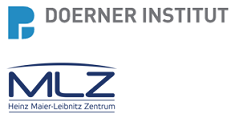Speaker
Description
Infrared spectroscopy has become a routine method for studying artistic materials and monitoring degradation processes. Most studies focus on the mid infrared spectral region (MIR 600-4000 cm-1), whilst the far infrared region (FIR, 50-600 cm-1) is often neglected. However, some studies have already highlighted the potential of analyses in the far-infrared region. It was shown that many pigments consisting of oxides and sulphides, which are not detectable by MIR, could be identified by FIR spectroscopy. In many other cases FIR provides additional information to MIR spectroscopy.
Whilst prior studies used conventional infrared light sources and, as far as the authors know, reference materials produced nowadays, in the presented research focus is on the use of synchrotron-based far-infrared spectroscopy to characterize pigments from the legacy of the two painters Arnold Boecklin (1827-1901) and Edvard Munch (1863-1944). Analysing painting materials from the artists’ possession excludes by-products and impurities formed in modern production methods and show the composition of the original 19th and 20th centuries pigments.
Synchrotron-based infrared spectroscopy experiments were conducted at the IRIS beamline of the BESSY II synchrotron facility. SR-FIR spectroscopy provides much higher signal intensity than conventional experiments. This results in a higher quality of the spectra and allows identification of low-intensity bands which may not be visible in a spectrum obtained by conventional spectroscopy. Measurements in the FIR region were carried out in transmission mode.
The presented research will be the base for future investigations using synchrotron FIR-microscopy, which will allow the investigation of small samples and cross-sections, taken from objects, and comparing contemporary refences with materials used on artworks.

